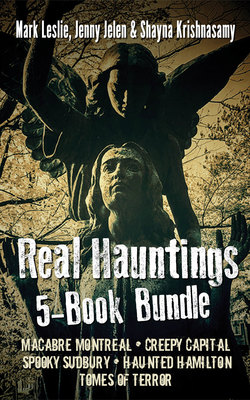Читать книгу Real Hauntings 5-Book Bundle - Mark Leslie - Страница 26
The Pervasive Legend of the Flying Canoe: Honoré Beaugrand’s Tale of a Deal with the Devil
ОглавлениеThere have been many stories about the terrible repercussions that befall those who make a deal with the Devil. The most popular French-Canadian version of the tale is perhaps the one that Honoré Beaugrand published in Century Magazine in August 1982 titled “La Chasse-Galerie.”
Beaugrand, who was born in Saint-Joseph-de-Lanoraie, Quebec, in March 1848, joined the military and lived in Mexico and the United States before returning to his home province and settling in Montreal in 1878. He founded the daily Montreal newspaper La Patrie the following year. Beaugrand was known as a political reporter and writer. He eventually entered politics, too, serving as the mayor of Montreal between 1885 and 1886. Today there is a metro station named after him.
Despite his many other accomplishments, Beaugrand is most popularly known as the folklorist who told the tale of “La Chasse-Galerie” (which translates as “The Flying Canoe” or “The Bewitched Canoe”). In the story, a group of Gatineau loggers working at a remote lumber camp get to drinking heavily on New Year’s Eve. Although they are enjoying the refreshments, they long to visit the sweethearts they left back home more than three hundred miles away.
To make such a journey in one night was impossible by conventional methods, so they make a pact with the Devil that enables their canoe to quickly fly through the air. As part of the pact they agree not to use the name of God, not to drink any liquor on the journey, to return before six o’clock the following morning, and not to touch any of the crosses on the church steeples they might fly over.
“Satan, king of the infernal regions,” the men chant in unison, “we promise to sell our souls if within the following six hours we pronounce le nom du bon Dieu, your master and ours, or if we touch a cross on the voyage. On that condition you will transport us through the air, wherever we may want to go, and bring us back sound and safe to the shanty.”
The men arrive at their desired location, enjoy the festivities and dance with their beloved sweethearts, and then set back on their journey home. Only Baptiste Durand, the group’s navigator (who claims to have taken similar trips multiple times before), drank during the festivities. During the trip back, he swears, using the Lord’s name in vain. The others overpower him and take over navigation of the canoe, which results in a harrowing near-death adventure before they return.
There are multiple variations of the original tale. Some have the men, who end up violating the conditions, condemned to fly the canoe through Hell itself, appearing every New Year’s Eve. Another has the Devil himself steering the canoe, with the men managing to toss him overboard in order to escape.
Beaugrand’s tale concludes with a wry statement:
All I can say, my friends, is that it is not so amusing as some people might think, to travel in mid-air, in the dead of winter, under the guidance of Beelzebub, running la chasse-galerie, and especially if you have un ivrogne to steer your bark canoe. Take my advice, and don’t listen to anyone who would try to rope you in for such a trip. Wait until summer before you go to see your sweethearts, for it is better to run all the rapids of the Ottawa and the St. Lawrence on a raft, than to travel in partnership with le diable himself.
The Flying Canoe is a visual image that has been used continually in Quebecois and wider Canadian popular culture. La Ronde, Quebec’s largest amusement park that was originally built for Montreal’s Expo 67 (the 1967 World’s Fair), had a ride that ran from the opening of the park until the spring of 2017 called La Pitoune. This ride, a log flume ride, used the legend of the flying canoe in its implementation, with an image of the Devil perched behind a group of terrified men and the high bench at the back of each log-car known as “the devil-seat.”
Versions of The Flying Canoe painting have been adapted regularly in Montreal, throughout Quebec, and across Canada.
The Montreal folk-metal band Blackguard used the image of a flying canoe on the cover of their second album, Profugus Mortis. The final track on this album, titled “The Last We Wage” is inspired by the Flying Canoe legend.
The name and label for “Maudite,” a Belgian-style strong dark ale produced by Unibroue in Chambly, Quebec, less than an hour’s drive from Montreal, also takes its inspiration from the legend. Maudite, which translates into English as “accursed” or “damned” was first released in 1992 and, with an alcohol content of 8 percent, was the first truly strong beer brewed in Canada.
As part of the opening ceremony for the Vancouver 2010 Winter Olympics, fiddler Colin Maier was lowered from the ceiling in a flying canoe, a direct allusion to the folktale.
In 1991 a series of Canadian folklore stamps issued a forty-cent postage stamp titled “Witched Canoe” in honour of this legend.
Perhaps now, when you see the ever-pervasive flying canoe motif in either Quebec or Canadian pop culture, you’ll be able to nod knowingly, fully understanding the Montreal-based source of the legend.
